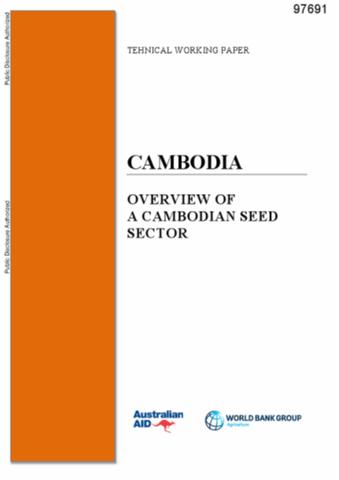Resource information
The use of quality seed is a major component of increased yields in crop production. Quality seed and seed programs in a country does not emerge by happenstance; it is created by a combination of many factors that include variety development, seed production, quality control, processing, marketing, and governmental oversight. As the seed sector in a country matures, each of these factors becomes more important and plays a more important role in the growth of the agricultural sector. The seed program in Cambodia is interestingly different from that in many other developing countries. Even without a true seed program in Cambodia, farmers understand the need to plant quality seed to increase crop yields. When structuring this growing seed industry, it is important to look at current practices and to incorporate these practices into programs. Since a major thrust of the seed program in Cambodia involves rice, it is important to consider its role in the average Cambodian’s life. Cambodia’s climate must also be accounted for in any decisions regarding seed. Its heat and humidity causes rapid deterioration of seed viability and germination in rice and other seeds in both the growth and storage phases. CARDI research has shown that the level of rice germination falls below 80-85 percent within 6-8 months after harvest; this means that seed must be planted during the growing season following harvest. Therefore, any seed produced beyond immediate planting needs for the next crop is used for milling; seed production costs for that seed cannot be recouped. When seed producers’ budgets are constrained, they often plan their seed production based on conservative seed sales estimates.


